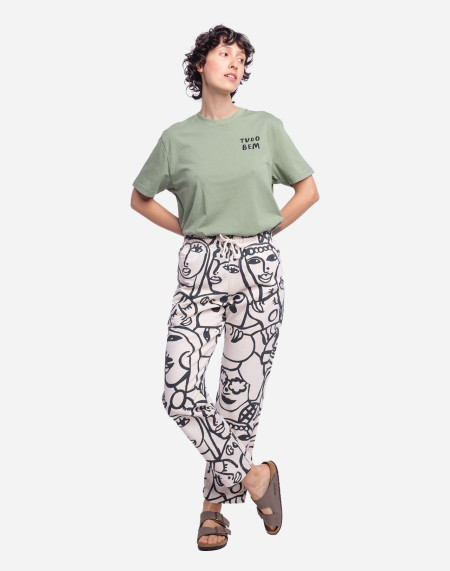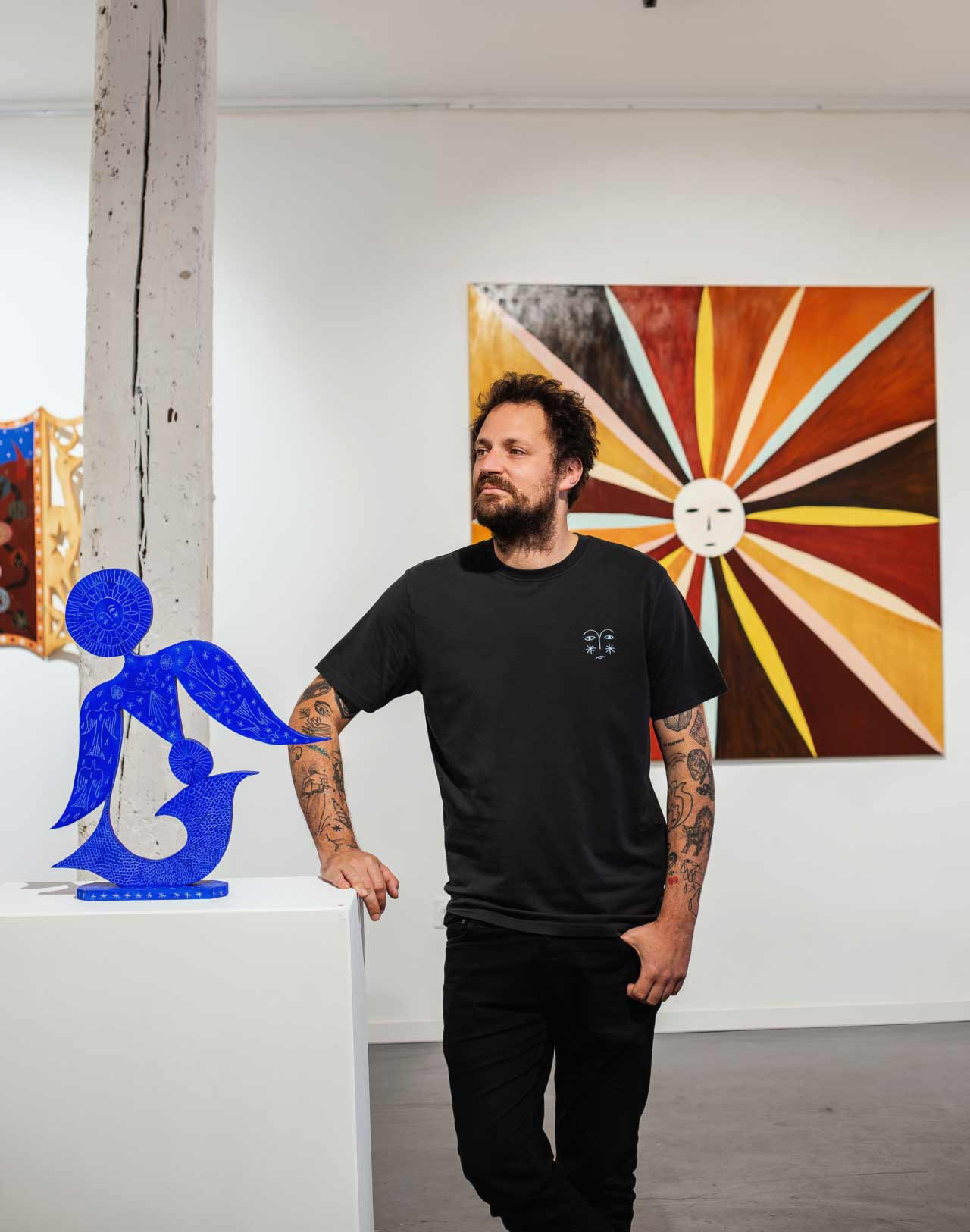Canopée in black & white
Discussion with artist Twotma
Photos by Nina Ducleux
Twotma is one of the artists who has made the biggest impression on us over the last 2 collections. Since last March, we've been working together on a number of projects, from an exhibition in our Paris boutique/office to a major poster campaign in Nantes.
We took advantage of Nina, our photographer, dropping by our studio to snap a few shots of her in her environment, and chat a bit about the collection and her work. From her city life to her escapades in the forest, she once again invites us into her poetic, impulsive world, all in black and white.

Can you (re)introduce yourself in a few words?
I'm Twotma, and I draw and paint in black and white using Indian ink. A few years ago, I introduced my work to Lisbon by hanging my drawings in the street. Now I live in Paris.
I think my main influence is my desire to escape: drawing is like a flight forward, as if I were trying to ‘de-influence’ myself and go somewhere else, if that's possible.
D’où te vient ton style ? Quelles sont tes influences principales ?
I imagine that the simplicity of my line has something to do with my need for spontaneity, my impatience, like a desire to ‘tidy up’ the chaos of my thoughts and reduce it to a clean line. For me, there's something very calming about the radical nature of black and white. The influences are as numerous as they are vague, lodged somewhere between everything I've experienced since I was born. I could say ‘Matisse, Picasso, Gauguin, Chagall’, because those are the painters who have most affected me, but that wouldn't really be true.
I think that influences escape us, it's a happy mess floating around in our subconscious, experiences, encounters, emotions from the past mixed with those of the present, and then what we do with them on paper. I think my main influence is my desire to escape: drawing is like a flight forward, like trying to ‘de-influence’ myself and go somewhere else, if that's possible.
It's quite common for people to stumble across one of your posters on a street corner. Do you choose the places where you put up your posters in advance? Or is it random?
In Lisbon, yes, there was a time when my drawings really took over the city - and even today I like to leave my mark there when I'm passing through. It's a city that makes me want to play, and it's always a pleasure when people recognise my work because they've seen it on a street corner in Portugal. There's nothing premeditated about what I do - if you see a drawing, it's because one day I was in a good mood and on a whim I went out to tell you. To premeditate would be like lying to me: the drawing would no longer be the trace - idiotic perhaps, but joyful and authentic - of a desire, it would be a calculation. The drawing would have moved from the belly to the head, in which case I don't know. It's not really me any more.
Your favourite place for your collages is the city, but how does (or would) nature have an impact on your work?
The city is inspiring in all its chaotic, noisy, absurd and disorderly ways, it's inspiring because it's alive, and my drawings draw their stories from the scenarios it puts under my nose every day. But if you want to remain receptive to her show - and I think it's the same for everyone - you have to go out and get some fresh air! My technique is regular bike rides in the countryside around Paris, and then as soon as I can, the mountains. To be honest, I look forward to it all year round: every summer, the two-week hike. It's a breath of fresh air that's essential to my work and, more generally, to my well-being and health.
The theme of this winter's collection is the forest. What does this evoke for you?
For me, the forest brings to mind the cool, shady place to go when hiking in the mountains, after hours of walking at altitude in the sun. It's a place where you enter in a daze of effort and heat, and it takes a few minutes for your eyes to get used to the darkness. The forest is a real treat for hikers.
































